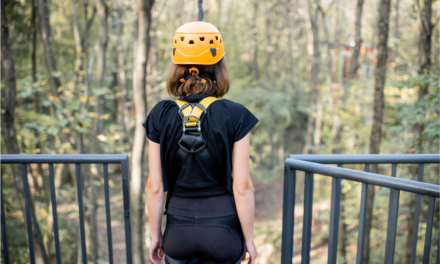Trying to Grow Good Food
Hive door swings opens and out the forager girl struts looking for the latest fashion buzz (bad pun) in pollen and nectar. “Say, does this pollen make my legs look big…good!” She grins. Lots of articles in the news about our friends the honey bees, therefore it was decided by the blog committee (me) to dedicate an entire blog to these girls. So grab a cup of tea, sweeten it with honey and read on. You want good food, you must have bees, the ultimate “friends with benefits,” arrangement. “Pollinate me! No, me first! Look how pretty I am. Pick me, Pick me!” scream the flowers to the bees, okay we know plants don’t actually scream, but they do release delightful scents and are shameless in wanting bees. Sounds familiar, wild women!?
When temperatures reach 50 degrees, forager bees send out small reconnaissance teams to look for flowering plants with flat landing surfaces and plenty of pollen or nectar. Once discovered, they fly back to the hive, do the waggle (I like that word) dance of directions to the food source. It is believed all directions are oriented to the sun. Then, the rest of the foragers follow those directions, of course they do, they’re girls. Honey bees have short tongues and short tempers if you mess with their hive. Therefore, they pick flowers that are easy to land on and easier to get pollen and nectar from. Bumble bees, on the other hand, are the linebackers of the bees and they just toss and tumble into a flower getting the pollen all over their hair…Eew, back hair, I digress.
Our beautiful bees are in trouble with populations declining at an alarming rate.
What gives and who is responsible? “Not I”, say the developers destroying their entire habitat, the farmers growing mono crops, and the pesticide companies with their poisons. Could it be another job for women to save the bees? “Why I?’ say you, because one in every three bites of food is from a plant visited by pollinators like bees. It is fair to say bees are absolutely critical to our food supply and food is essential to our survival. Basically, humans live because bees live! Enough said.
Let’s solve the problem. Wait for it…another trilogy: Feed, protect, and shop.
Bees can be saved if we will simply feed them.
As you know, bees forage for pollen and nectar from plants that bloom…like flowers, trees, grasses, vegetables, shrubs, and even cactus. Go native baby and rethink about that water sucking, chemical addicting, work demanding, nobody appreciates it, lawn of yours. Plant gardens that bees will love as much as people do! If you need help, check out The Bee Smart™ Pollinator Gardener, a comprehensive guidebook to selecting plants for bees specific to any area.
Plants to consider in the Texas area include: moon flower Salvia, Primrose, Echinacea, Cardinal Flower, Larkspur, Indian Paintbrush, Sunflower, Prairie Clover, and Texas Redbud just to name a few. Invest in native flowers as they give you the best bang for your buck. Highly hybridize ornamental flowers do not have much pollen or nectar because they are bred to look good, not reproduce. Wildflowers should be planted along fence rows, roadsides, in public places, and in planters in town. Cover crops like clover, hairy vetch, or cow peas can be used to offer a great buffet for bees, especially when flowers are dormant. If the owners of every ranch, yard, piece of idle land, and business would dedicate some landscape to bees, Texas bees could be saved and, as a side note, butterflies, too.
Once the bees are nourished, they must be protected.
No need to send in the National Guard, but bees need safe places to live with clean water and air, just like us. The use of pesticides and other chemicals must be kept to an absolute minimum (of course we would advocate NONE, ZERO, NADA)…especially on the flowers that bees frequently visit. Do not, under any circumstance, no way, no how, buy a plant treated with neonicotinoids and for crying out loud, do not use it yourself. Like nicotine, it acts on receptors of the nerve synapse. I know you have not forgot what we learned earlier, whatever the plant absorbs, you and your family absorb and now we know Smokin’ Joe is not only toxic to you, it impacts the bees’ navigation system interfering with their ability to find their hive. The girl with the groceries cannot find her house (hive), guess what happens—it starves to death.

Nesting habitats also need to be increased.
But not all bees are honey bees. There are many native Texas bees that do not live in colonies (and they don’t sting as often because they don’t have a hive to protect). These are called solitary bees. They often live in the ground or in dead trees. To encourage solitary bees, the gardener needs to provide sunny, well-drained patches of bare ground. Keeping some portion of a flower bed free of mulch, exposing the soil, is a quick and easy way to provide habitat for ground-nesting bees. A lack of deadwood can be addressed by installing nest blocks…boxes that shed water and are filled with paper tubes in which the bees can deposit eggs.
Finally, get on your shopping shoes and demand and buy local honey.
If women create a bigger market for local honey, more people might raise honey bees, thus increasing their population. This is an opportunity for small local businesses and for you to spend money on local folks growing good food. If you are still curious about bees, check out Texasbeekeeper.org; txbeeguild.org; or watch Marla Spivak TED talk.

Recommended Reading:
The Bees: A Novel by Laline Paull Flora 717 is a sanitation worker, a member of the lowest caste in her orchard hive where work and sacrifice are the highest virtues and worship of the beloved Queen the only religion. But Flora is not like other bees.












